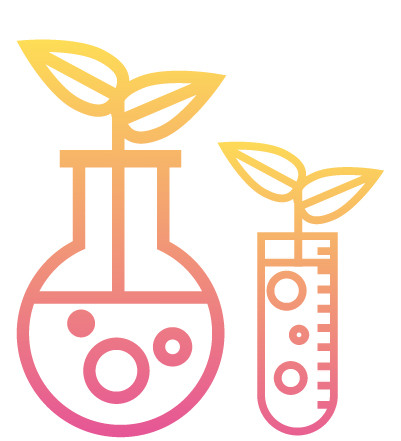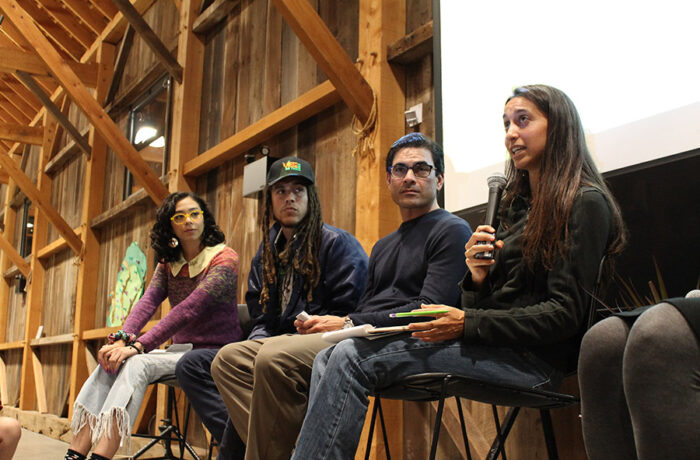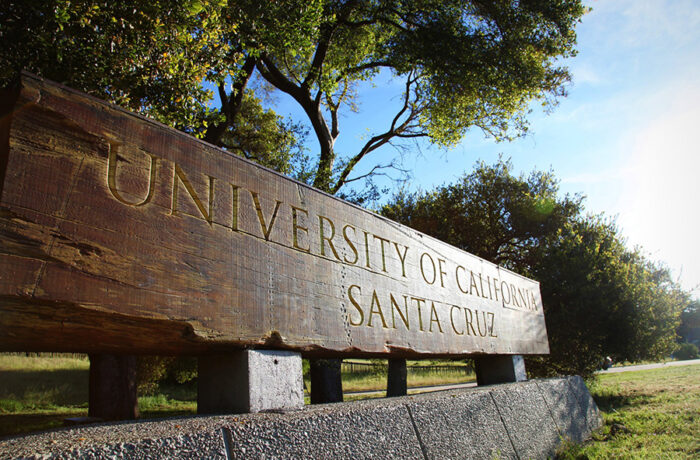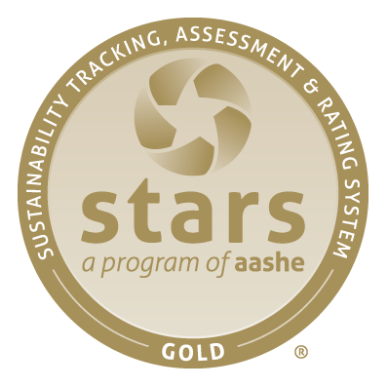UC Santa Cruz made major advances toward meeting the systemwide 2025 carbon neutrality goal with the construction of its largest renewable energy system through a power purchase agreement.
A new 2.1-megawatt photovoltaic array located at the East Remote Parking Lot will replace approximately 20% of grid-purchased electricity, or just over 6% of the campus’s total electrical load. This equates to greenhouse gas reductions of 767 megatons of CO2e, or 2.6% of UCSC’s scope 1 and 2 emissions. This large array will provide covered parking while saving the University approximately $6 million over the array’s 20-year lifetime.
UCSC’s Carbon Neutrality Initiative Fellows developed an energy and emissions roadshow and promoted multiple energy conservation measures, such as the Million LED Challenge and the International Laboratory Freezer Challenge, which will continue to help educate the campus community and support carbon neutrality in the long term.
Several transportation accomplishments continue to chip away at UCSC’s scope 1 emissions. Out of 17 purchased light-duty fleet vehicles, the campus purchased 10 zero-emission vehicles (ZEVs) and two hybrids — the most sustainable year of purchases yet. Fleet Services received a $20,000 UCSC Carbon Fund grant to subsidize the purchase of the next five ZEVs. Additionally, Transportation and Parking Services worked with the City of Santa Cruz Metro to establish express bus routes, allowing for better service and increased ridership across campus.
In addition to working on carbon neutrality, the campus elevated the significance of resilience and adaptation planning. UCSC conducted a preliminary resilience assessment across campus, formally incorporated the topic within the work of the Risk Intelligence committee and briefed campus leadership. The campus also identified potential areas of partnership with the City of Santa Cruz Climate Action Program to continue exploring future climate impacts throughout the local community and across the region.

CLIMATE PROTECTION – EMISSIONS
ENERGY – RENEWABLE ELECTRICITY GENERATION
ENERGY USE INTENSITY (EUI)
Transportation
UC Santa Cruz continued to make strides in its efforts to use alternative transportation methods and support the use of electric vehicles in 2020.

of UCSC employees are utilizing alternative commuting methods

EV charging stations at this location for 2019-2020

of light-duty vehicles acquired in 2020 were electric (zero-emission) and hybrid vehicles
Water
ZERO WASTE – GENERATED
ZERO WASTE – DIVERTED
Food
UC Santa Cruz continues to set ambitious goals, with a goal for 2030 of 25% spend on sustainable food and beverages.

total spend on food and beverages
of food and beverage purchases met sustainability criteria in fiscal year 2019-20
procurement

green spend on indoor office furniture

green spend
on cleaning supplies

green spend on electronics
UC Santa Cruz’s goals for procurement include 25% green spend on electronics and indoor office furniture, and 75% green spend on cleaning supplies.
Green building
UC Santa Cruz’s total LEED certifications speak to its commitment to sustainability.
7 Gold, 6 Silver and 1 Certified
Total number of LEED certifications
Sustainable Building & Laboratory Operations

total assessed research labs
UC Santa Cruz has met the goal of assessing three labs.
Awards
UC Santa Cruz was the proud recipient of an AASHE STARS Gold rating in 2020.
A full list of awards is here.
 Sustainability Annual Report 2020
Sustainability Annual Report 2020


